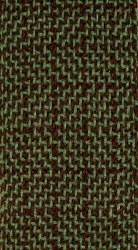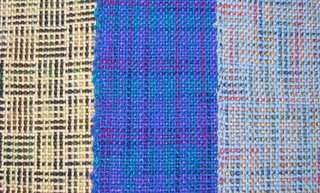Peg and I were having an interesting discussion about log cabin, and I started to wonder: What are its absolute bottom line elements? Does log cabin become something else when the weave structure changes, even though it keeps log cabin color patterning in it’s warp and weft? What happens when one starts playing with the colors pattern?
I had only picked up bits and pieces of an answer from various sources, so I shifted into research mode. I discovered that opinions varied somewhat. Not everyone seemed to agree on all the elements, but the consensus was that technically log cabin is a color effect on a plain weave structure.
After all that I pondered, so what, does it really matter? Well, in regards to artistic considerations probably not. In regards to teaching, I’d say yes. In regards to communication about weaving in general, it depends upon the communicators! For example, if you hadn‘t seen my log cabin twill samples, how would I describe them to you? Which explanation would mean more to you: “It’s a two block two color, color and weave with alternating blocks beginning and ending on different colors and the ends within those blocks alternating colors,“ or “It’s a log cabin twill.“?
That said, here are some more of my log cabin effect twills…..and beyond. :)

The variegated yarn in the all three samples is the same. The sample on the right obviously used three colors of yarn.

And as you can see, I was plagued by more than just philosophical questions.

And as you can see, I was plagued by more than just philosophical questions.
© 2006 Leigh's Fiber Journal
















